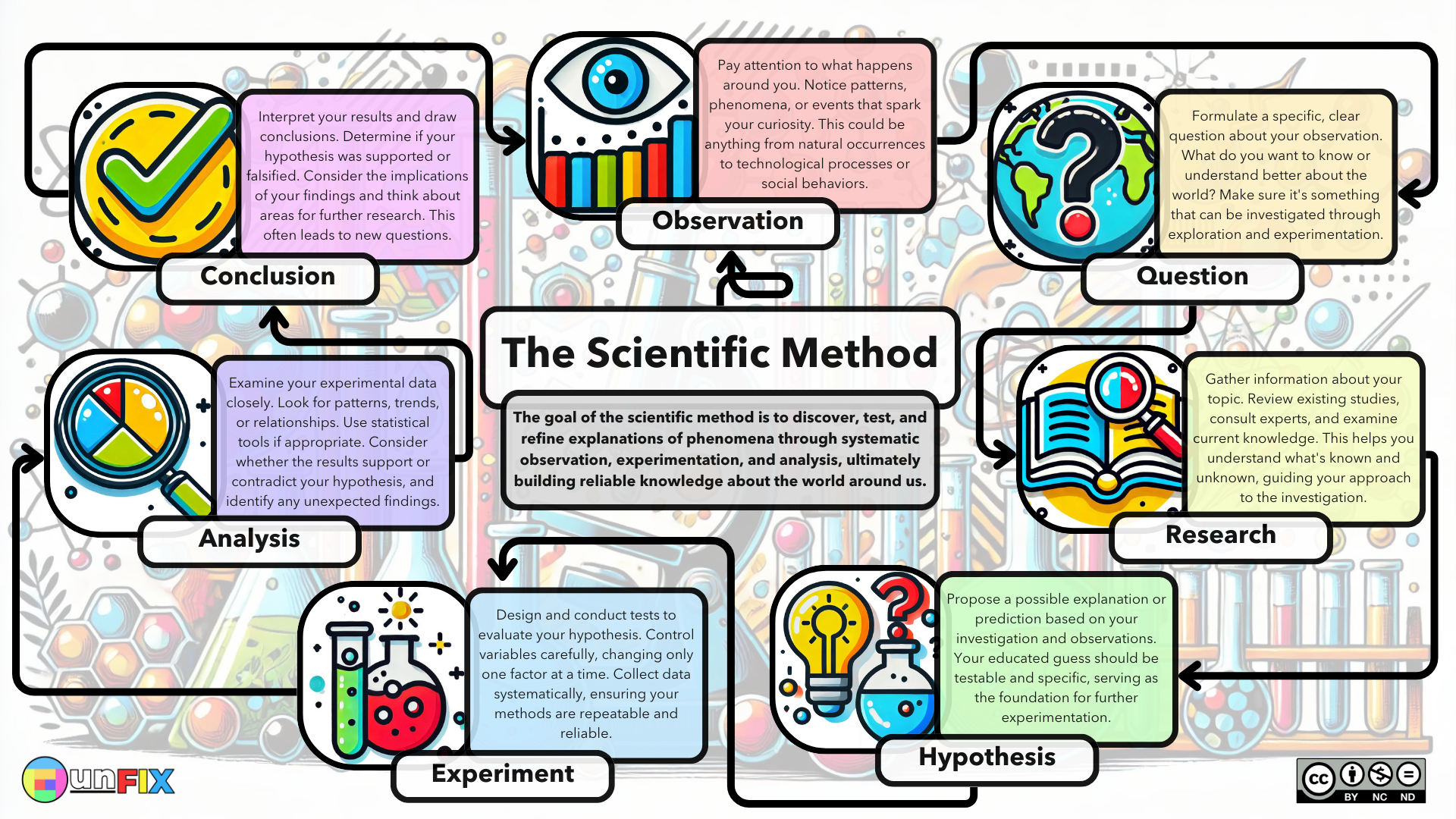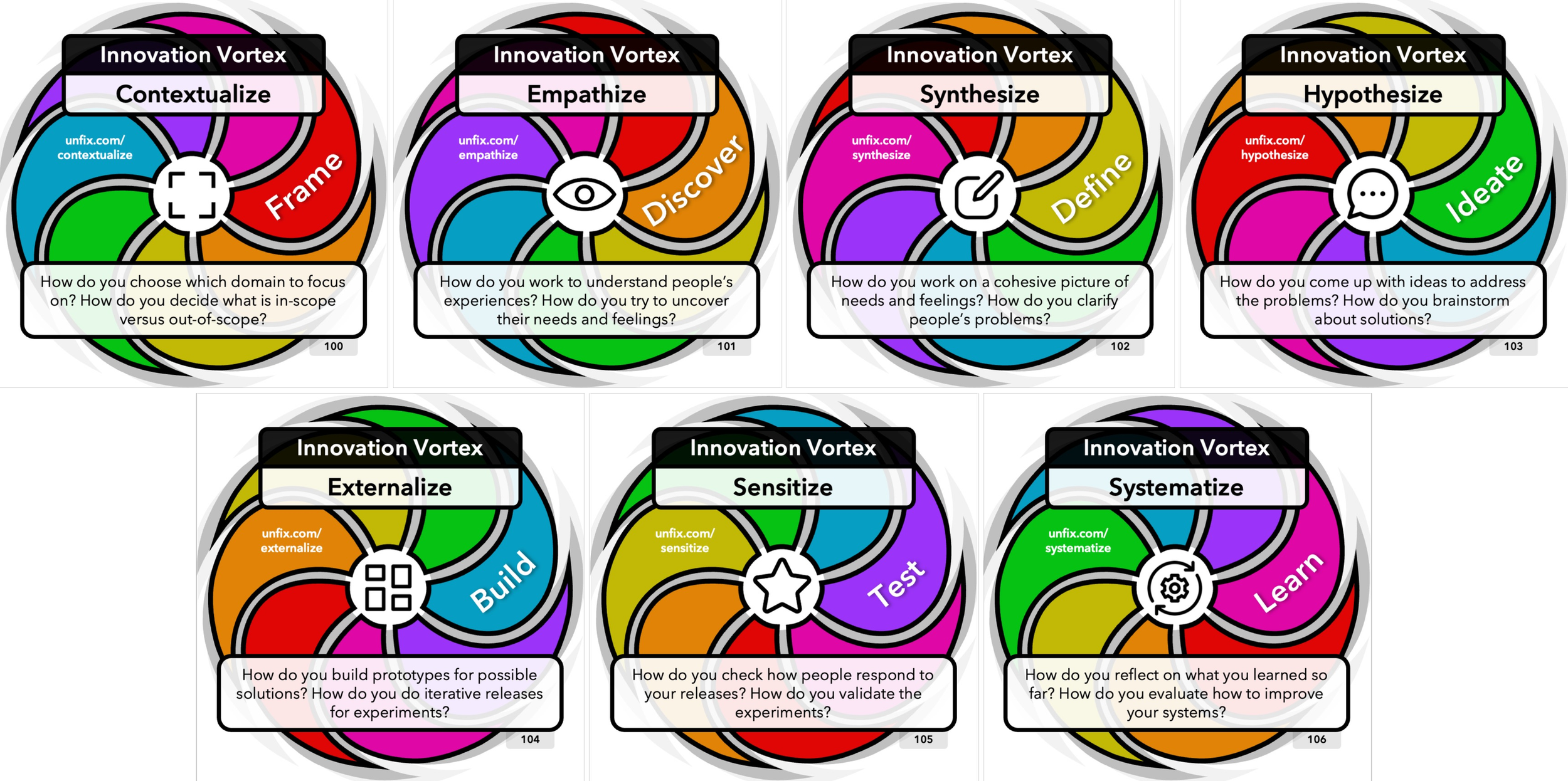The Scientific Method in Product Innovation
Author: Jurgen Appelo
Anyone who has delved into innovative product development is familiar with the five-step Design Thinking process by IDEO and Lean Startup’s Build-Measure-Learn loop. However, the model that aligns most closely with the scientific method could be the Innovation Vortex.
The scientific method, a cornerstone of scientific discovery for centuries, follows a systematic approach to inquiry. Its formalization, credited to philosophers like Francis Bacon and René Descartes and later refined by Karl Popper, emphasizes observation, hypothesis formation, experimentation, and analysis of empirical evidence. This systematic process has driven the remarkable advancements in science and technology that we enjoy today.
In product innovation, the rigor of the scientific method has been championed by figures like Steve Blank, creator of the Customer Development Model, and Eric Ries, author of Lean Startup. They and others have effectively brought scientific rigor to product innovation, guiding development from initial concept to market-ready product through continuous iterations of experiments.
The Innovation Vortex is a merger of both Design Thinking and Lean Startup, bringing together the insights from both product innovation models.
Note: Newer iterations of IDEO’s process show six steps instead of five. They’ve recently added Frame a Question as an extra step at the beginning which, we are pleased to say, was already the first step of the Innovation Vortex for several years.
Now, let’s be honest here. Building innovative products is not the same thing as developing scientific theories. However, the parallels are obvious, as you can see in the following comparison:
Specialization (Frame in the Innovation Vortex): While not typically shown in visuals of the scientific method, academic specialization is crucial. Scientists specialize in preferred research areas, much like organizations focus on particular markets, framing the problem they aim to solve. However, unlike most scientists, organizations frequently shift focus areas, hence the inclusion of this stage in the Innovation Vortex.
Observation (Discover in the Innovation Vortex): This stage involves identifying a market problem or need, akin to scientists observing phenomena for further understanding. In business, this translates to observing gaps in current solutions or emerging trends, paralleling scientific researchers observing knowledge gaps they want to explore.
Question (Define in the Innovation Vortex): Scientists formulate specific questions about their observations, defining their investigative focus. Similarly, in product development, observations are synthesized into questions we can explore through experimentation.
Research: Although not explicitly mentioned in the Innovation Vortex, research is vital to the scientific method. Reviewing existing studies and current knowledge informs both scientific and product innovation, ensuring a solid foundation for new hypotheses or product ideas.
Hypothesis (Ideate in the Innovation Vortex): Scientists propose explanations or predictions based on observations. In product development, once we identify a customer need, we can develop a hypothesis to address it. This hypothesis serves as a testable solution, outlining expected outcomes.
Experiment (Build in the Innovation Vortex): Scientists design experiments to test hypotheses, carefully controlling variables. Product innovation involves developing prototypes and conducting tests, iterating based on feedback and performance data.
Analysis (Test in the Innovation Vortex): Analyzing experimental results determines the validity of the hypothesis. In product development, we assess metrics such as user satisfaction and functionality. Supported hypotheses move the product closer to launch, while unsupported ones require hypothesis adjustments and further testing.
Conclusion (Learn in the Innovation Vortex): Conclusions drawn from data inform the next steps. Successful hypotheses might lead to scientific publications or market introduction of new products. Flawed hypotheses prompt additional observations and experiments, restarting the cycle.
Note: Some visuals of the scientific model show (scientific) Publication as a separate ninth step. This is similar to the final step in IDEO’s current six-step model, where they call it Share the Story. We chose not to include Publication/Storytelling as an extra step in the Innovation Vortex because the other steps of the process can (and should) be done iteratively. This is not the case with Publication/Storytelling, which usually happens only once when the iterative cycles are completed and the end result is worth sharing. Including it as part of the visual would be confusing and could make people misinterpret the model as a sequential process that happens only once.
When the scientific method is applied to product innovation, this structured approach mitigates the risk of failed product launches and enhances the chance of market success. The Innovation Vortex effectively encapsulates the scientific process, making it an innovation model that looks remarkably similar to pictures that visualize the scientific model.


